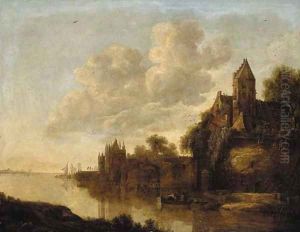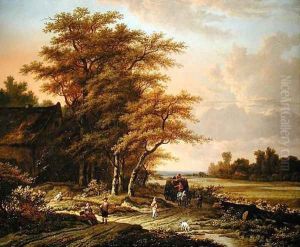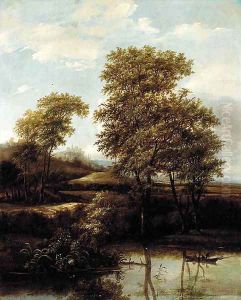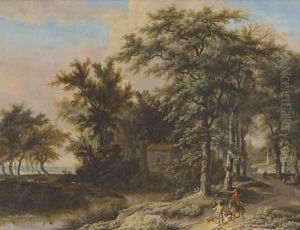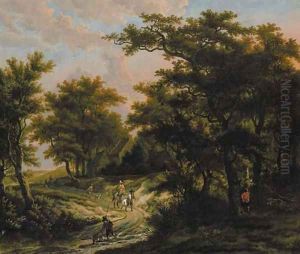Adriaen Hendricksz Verboom Paintings
Adriaen Hendricksz Verboom was a Dutch Golden Age landscape painter, born in 1628, whose works are distinguished by their meticulous attention to detail, serene composition, and the delicate portrayal of light. Although not as widely recognized as some of his contemporaries, Verboom's contributions to Dutch landscape painting during the 17th century reflect the period's fascination with nature, exploration, and the depiction of idyllic pastoral scenes.
Verboom's early life and training are not thoroughly documented, but it is believed that he was active in Rotterdam and later in Amsterdam. His landscapes often feature wooded scenes, with meticulous attention to the variety of trees and foliage, set against expansive skies. These compositions typically include small figures and animals to animate the scene, a common practice among landscape artists of the time to add life and narrative to their work.
Despite the scarcity of biographical details, Verboom's paintings suggest that he was deeply influenced by the work of other Dutch landscape painters such as Meindert Hobbema and Jacob van Ruisdael. His ability to render the texture of tree bark, the softness of skies, and the tranquility of rural life was remarkable. Verboom's landscapes are noted for their calm and harmonious qualities, often imbued with a sense of timeless beauty.
Verboom passed away in 1670, leaving behind a modest but significant body of work. His paintings are now held in various art collections and museums, where they continue to be appreciated for their beauty and historical value. While he may not have achieved the fame of some of his peers, Adriaen Hendricksz Verboom's contributions to the Dutch Golden Age of painting remain an important part of the era's artistic legacy.
